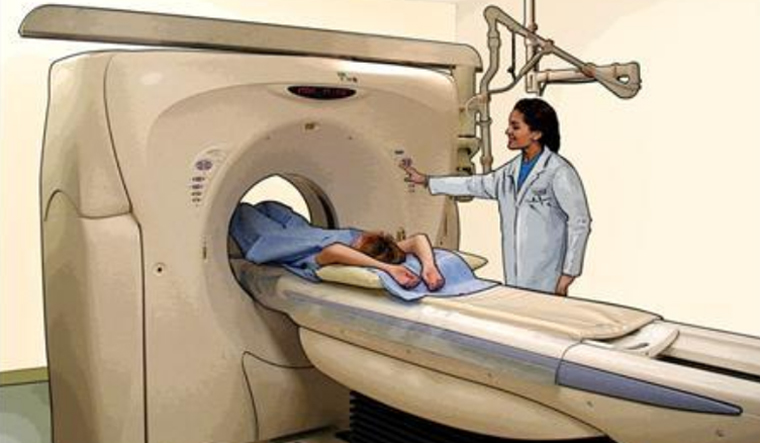Indian Radiological & Imaging Association (IRIA) has said that the understanding that Computerized Tomography scan (CT-Scan) being equal to the radiation exposure of 300-400 X-rays is wrong and outdated.
In a statement, issued in response to AIIMS Director Dr. Randeep Guleria’s ‘CT scan causes cancer’, IRIA says that modern ultra low dose CT Scanners emit radiation that is comparable to barely about 5-10 X-rays.
IRDA said that Dr. Guleria’s statements could create confusion among the people as it the previous findings were unscientific.
IRIA clarified that CT scans are highly sensitive and effective in monitoring patients with severe COVID-19 pneumonia. “As CT is much more sensitive in detecting lung damage than pulse oximetry, initiating steroid medication can holt lung damage and save lives,” reads the statement by IRIA.
“CT Chest is helpful to identify the disease mild, moderate or severe and helps in clinical management, also the progression of disease can be monitored by CT in deteriorating patients,” reads the statement signed by Prof. C. Amarnath, president of IRIA.
While interactig with media people on May 3, Dr. Randeep Guleria said that CT scans on patients having mild Covid-19 symptoms are unnecessary and said overuse of CT scans increases exposure to radiation escalates the risk of cancer, especially among the youth
DR Guleria also said one CT scan is equivalent to 300-400 chest X-rays and this increases the risk of having cancer in later life, especially among the youth, as one is exposed to harmful radiation. “If you are in doubt, then go for a chest X-ray first. If necessary, the doctor will give proper advice whether a CT scan is needed or not,” Guleria had said.
“Radiologists world over use the ALARA Principle (As low as reasonably achievable) and give the minimal rendition possible during the process. Also, the statement that CT Chest scan can cause Cancer is alarming, as the radiation from a single Chest CT is almost equivalent to the background radiation received by any person over a year,” said the statement.


